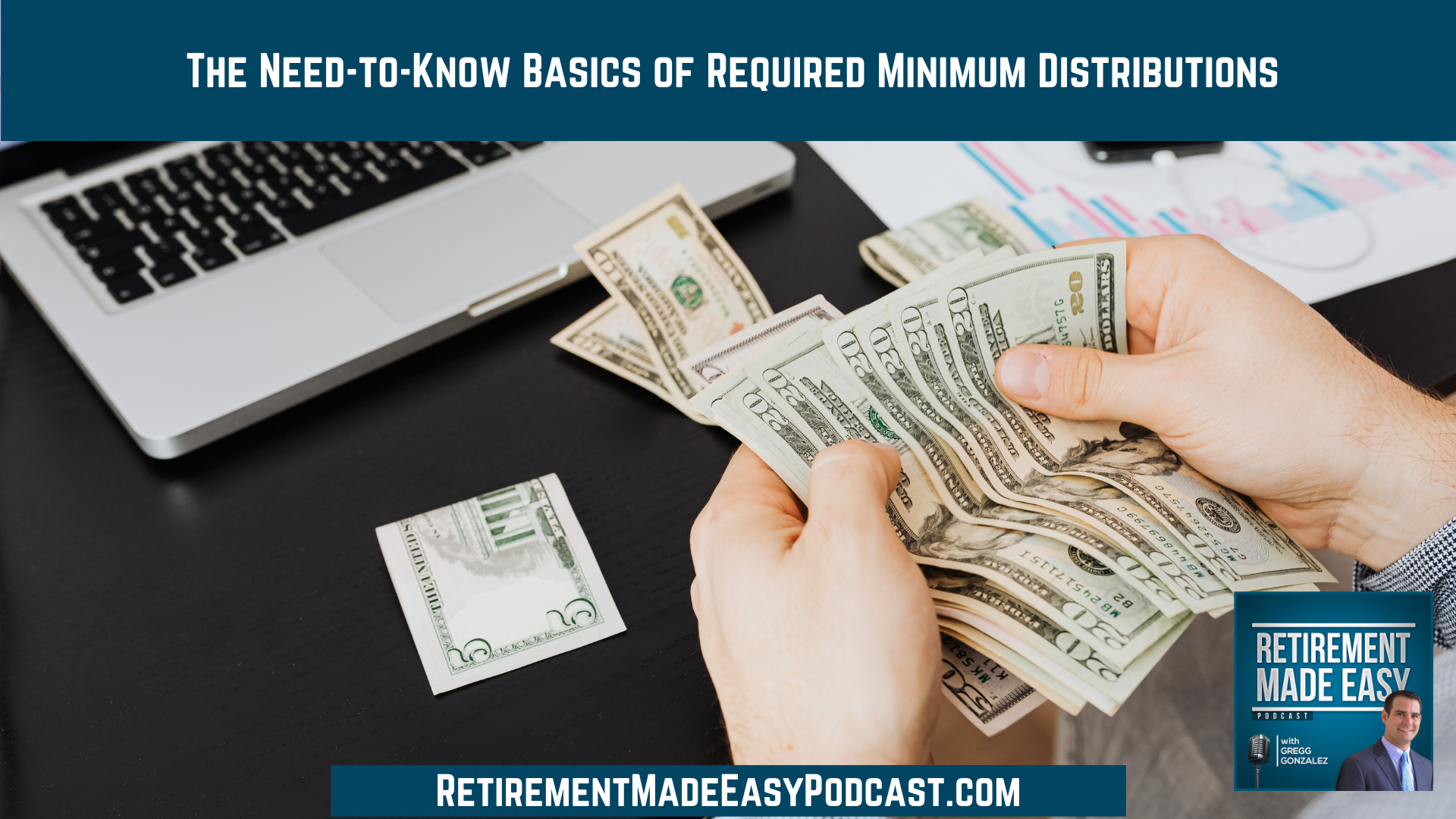
What are required minimum distributions (RMDs)? How will they impact you? How do we account for them? Too many financial advisors neglect to help their clients plan for RMDs. I am not one of them. I cover the basics that you need to know in this episode of Retirement Made Easy.
You will want to hear this episode if you are interested in…
- [1:54] Carefully choose the people you take advice from
- [5:29] Something you need to know about 401ks
- [9:47] The basics of required minimum distributions
- [13:28] Why you want to work with a professional
- [15:22] The various ways you can take distributions
- [19:07] Know that the time is coming and plan for it
- [20:46] RMDs for inherited accounts are different
The basics of required minimum distributions
Once you turn a certain age, you have to start taking withdrawals from pre-tax retirement accounts (Traditional IRAs, SEP IRAs, Simple IRAs, 401Ks, etc.). What is that magical age?
- For anyone born before 1959, it’s 73
- For anyone born after 1960, it’s 75
Why does the government want you to take distributions? It’s simple—they need the tax revenue. If you’re still working at 73, you don’t have to take the RMD until you retire (unless you have an outside IRA).
It gets complicated if you have multiple 401ks. Let’s say you’re retired, turning 73, and have three 401ks from previous employers. The rules say that you have to take an RMD from each 401k. I would try to consolidate them into one 401k, if possible.
If you have three different IRAs, you can tally them up and take the RMDs from just one IRA. Or, you could still take three RMDs from each IRA. You can also take out more than your required minimum distribution
In the year you turn 73, you can delay taking the first RMD until April 15th of the following year. But you’d have to take two RMDs upon turning 74. It might not be in your best interest.
The various ways you can take distributions
How do you calculate how much you need to withdraw? The custodian of your account can do it for you (if you ask) and give you the exact amount. There are also calculator tables that you can find online.
You take the account value at the end of the previous year (let’s say it was $100,000 on 12/31) and you divide that by 26.5%. The table will tell you that at age 73, you must withdraw $3,773.58. If you have a bad year in the market, your RMD may go down. The amount may vary from year to year, pending your age and account balance.
What if you don’t need the money? You can take a qualified charitable distribution (QCD). That means you can take the $3,773.58 and donate it to a 501C3. No one pays the taxes on it.
Keep in mind two things: You can’t take the money and do a Roth conversion. Secondly, Inherited RMDs have separate rules.
Know that the time is coming and plan for it
Don’t bury your head in the sand and hope for the best. You know it’s coming. You need to think about what you’re going to need to withdraw. You don’t want to be stuck with a huge tax bill. Your retirement planner can help guide your decisions. The whole idea of planning is to save money on taxes (for you and your heirs).
Learn more about required minimum distributions (and some need-to-know points about 401ks) in this episode of Retirement Made Easy!
Resources & People Mentioned
Connect With Gregg Gonzalez
- Email at: Gregg@RetireSTL.com
- Podcast: https://RetirementMadeEasyPodcast.com
- Website: https://StLouisFinancialAdvisor.com
- Follow Gregg on LinkedIn
- Follow Gregg on Facebook
- Follow Gregg on YouTube



